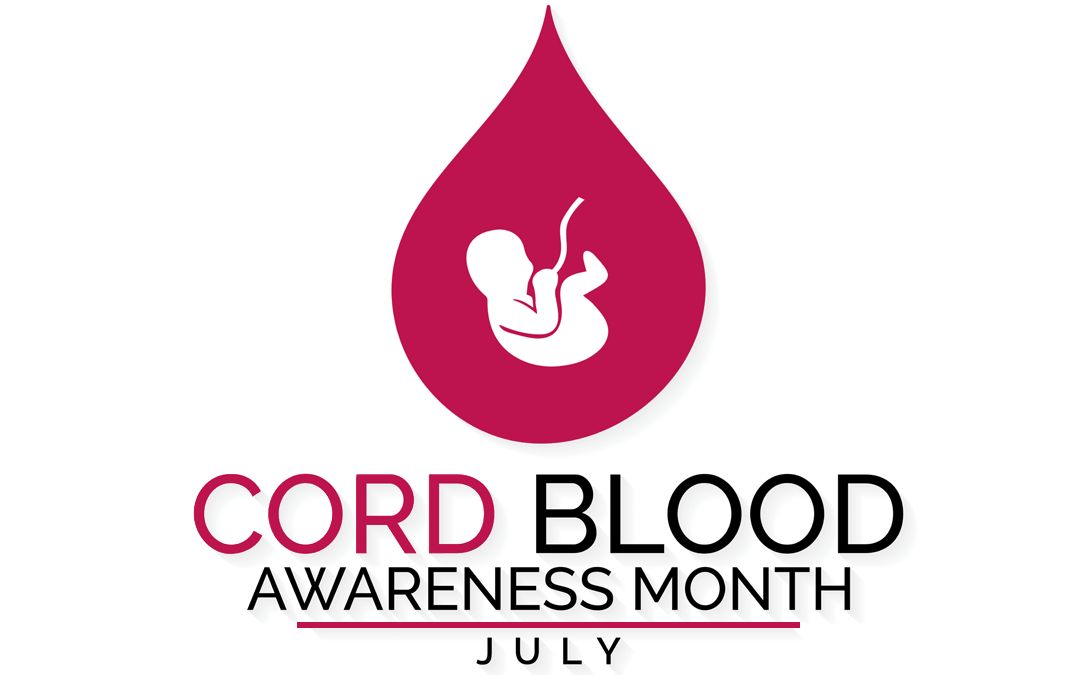Throughout July we are celebrating Cord Blood Awareness Month, which aims to raise awareness amongst expectant parents about the importance of saving umbilical cord blood, as well as the valuable stem cells that it contains.
Each week we will be discussing a different topic relating to umbilical cord blood. To kick things off, this week we will be looking at the past, present and future of cord blood. But first, what is cord blood and why is it so special?
years of using cord blood
cord blood transplants
conditions treated
What is cord blood?
Cord blood is the residual blood that remains in the umbilical cord and placenta following childbirth. Umbilical cord blood is rich in powerful stem cells, similar to those found in bone marrow. In fact, umbilical cord blood contains billions of these stem cells, serving as a valuable medical resource which is already used to treat over 80 different conditions.
Umbilical cord blood stem cells are referred to as the ‘building blocks of life’ because they are the foundation of all organs, tissues, blood and the immune system. They serve as the internal repair system due to their unique ability to self-renew indefinitely and divide into specialised cells. This means they can transform into many different cell types within the body to repair, regrow or regenerate damaged cells within the body.
Following the arrival of your baby, the umbilical cord is often thrown away as medical waste along with the precious stem cells that is in it. However, thanks to scientific research, we are continuing to discover more diseases and conditions that can be successfully treated using umbilical cord blood stem cells.
Let’s take a look at just how far umbilical cord blood stem cells has progressed over the last 50 years.
Cord blood: past
Umbilical cord blood stem cells were first discovered in 1978, with the first successful umbilical cord blood transplant taking place just 10 years later in 1988.
The transplant was performed on a 5-year-old boy with Fancomi anaemia – a rare but serious blood disorder. Most children diagnosed with this condition are given 5-10 years to live unless treated with a bone marrow transplant. Unfortunately, the young boy did not have a living related matched donor.
However, the patient’s mother became pregnant and the baby was healthy and an identical match for the patient. Over 30 years since receiving the treatment, the patient is alive and well with his own family.
Following this early success, other researchers followed suit and extended the work by treating other matched siblings using cord blood for conditions like leukaemia. Cord blood not only worked, but had several advantages over bone marrow transplantation, including lower risk of graft-versus-host disease – a common complication of transplantations using donor cells.
Since then, more than 40,000 cord blood transplants have been performed worldwide and cord blood continues to be investigated in clinical trials to treat various conditions.
Cord blood: present
Due to their special ability to transform into any type of blood cell, stem cells found within cord blood, in particular haematopoietic stem cells, are currently being used in stem cell treatments for various immune disorders and blood cancers, such as leukaemia, lymphoma and sickle cell disease. Additionally, mesenchymal stem cells which can be found in umbilical cord tissue can become a host of tissue types, including nerve tissue, muscle tissue and cartilage.
Today there are hundreds of ongoing clinical trials investigating the use of stem cells to treat common and often life-threatening conditions such as heart disease, Alzheimer’s and diabetes.
Umbilical cord stem cells have even been used to treat severely ill COVID-19 cases as well as to treat sporting injuries on famous athletes such as Rafael Nadal, Cristiano Ronaldo and David Beckham.
Cord blood: future
Regenerative medicine is an exciting new area of medicine which develops methods to regrow, repair or replace damaged or diseased cells, organs, or tissues. Stem cells from the umbilical cord cells are considered to be extremely important for future developments within regenerative medicine.
Researchers are investigating the use of umbilical cord blood stem cells to treat a wide array of conditions, including the following:
- Autism
- Brain Injury
- Multiple Sclerosis
- Cerebral Palsy
- Parkinson’s Disease
- Alzheimer’s Disease
- Cystic Fibrosis
- Hearing Loss
- Bone Fractures
- Burns
- Stroke
- Arthritis
- Crohn’s Disease
- Heart Attack
- Liver Disease
- Diabetes
- Spinal Cord Injury
- Lung Disease
Cord blood stem cells have shown great promise in initial results from these clinical trials, with scientists turning science fiction into reality. It is often for this regenerative potential that thousands of families across the world choose to store their baby’s cord blood.
Stay tuned over the coming weeks for more exciting insights into the world of cord blood. Throughout the week we’ll also be using our social media channels to delve deeper into stem cells and their regenerative potential. Make sure to check it out and ask us any questions you may have!
Facebook: @Cells4Life
Instagram: @cells4lifeuk
Twitter: @Cells4Life
References
- Cristina Navarrete, (2009) “Cord Blood Banking: A Historical Perspective” BJH Review, available at:
https://onlinelibrary.wiley.com/doi/epdf/10.1111/j.1365-2141.2009.07827.x - Joanne Kurtzberg, (2017) “A History of Cord Blood Banking and Transplantation”, Stem Cells Translational Medicine, available at:
https://www.ncbi.nlm.nih.gov/pmc/articles/PMC5442723/ - ClinicalTrials.gov, (2020) “Studies found for cord blood”, available at:
https://clinicaltrials.gov/ct2/results?cond=cord+blood&term=&cntry=&state=&city=&dist=
Request a Welcome Pack
Find out more about cord blood banking by downloading a Welcome Pack now.








